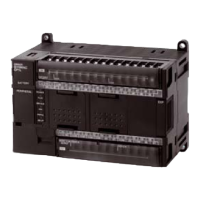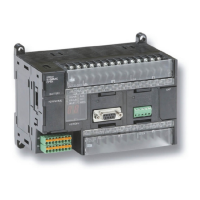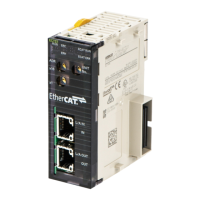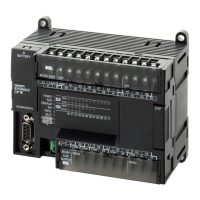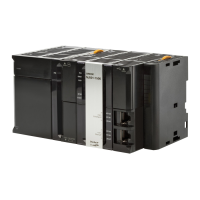Glossary
243
I/O bit A bit in memory used to hold I/O status. Input bits reflect the status of input
terminals; output bits hold the status for output terminals.
I/O capacity The number of inputs and outputs that a PC is able to handle. This number
ranges from around one hundred for smaller PCs to two thousand for the larg-
est ones.
I/O delay The delay in time from when a signal is sent to an output to when the status of
the output is actually in effect, or the delay in time from when the status of an
input changes until the signal indicating the change in the status is received.
I/O device A device connected to the I/O terminals on I/O Units. I/O devices may be
either part of the Control System, if they function to help control other devices,
or they may be part of the controlled system.
I/O interrupt An interrupt generated by a signal from I/O.
I/O point The place at which an input signal enters the PC System, or at which an out-
put signal leaves the PC System. In physical terms, I/O points correspond to
terminals or connector pins on a Unit; in terms of programming, an I/O points
correspond to I/O bits in the IR area.
I/O refreshing The process of updating output status sent to external devices so that it
agrees with the status of output bits held in memory, and of updating input bits
in memory so that they agree with the status of inputs from external devices.
I/O response time The time required for an output signal to be sent from the PC in response to
an input signal received from an external device.
I/O Unit The Units in a PC that are physically connected to I/O devices to input and
output signals. I/O Units include Input Units and Output Units, each of which is
available in a range of specifications.
I/O word A word in the IR area that is allocated to a Unit in the PC System and is used
to hold I/O status for that Unit.
IBM PC/AT or compatible A computer that has similar architecture to, that is logically compatible with,
and that can run software designed for an IBM PC/AT computer.
increment Increasing a numeric value, usually by 1.
indirect address An address whose contents indicates another address. The contents of the
second address will be used as the actual operand.
initialization error An error that occurs either in hardware or software during the PC System star-
tup, i.e., during initialization.
initialize Part of the startup process whereby some memory areas are cleared, system
setup is checked, and default values are set.
input The signal coming from an external device into the PC. The term input is often
used abstractly or collectively to refer to incoming signals.
input bit A bit in the IR area that is allocated to hold the status of an input.
input device An external device that sends signals into the PC System.
input point The point at which an input enters the PC System. Input points correspond
physically to terminals or connector pins.
input signal A change in the status of a connection entering the PC. Generally an input
signal is said to exist when, for example, a connection point goes from low to
high voltage or from a nonconductive to a conductive state.
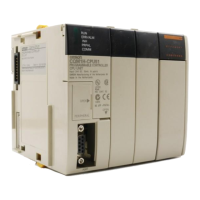
